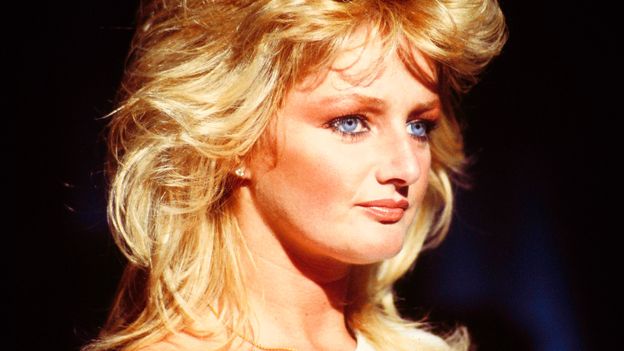
One day in the summer of 1982, Canadian vocalist Rory Dodd was summoned to the Power Station recording studio in New York City to lend his vocals to a song, written and produced by his colleague and friend Jim Steinman for Welsh singer Bonnie Tyler. “Jesus! Where’s the kitchen sink?” Dodd cried, when he heard the final, jaw-dropping mix of the track.
The song was Total Eclipse of the Heart. Released 40 years ago in February 1983, this gothic aria became an unprecedented international success that pushed the boundaries of melodrama in pop music. It topped the UK charts, unseating Michael Jackson’s Billie Jean, was an even bigger hit in the US, and soared to number one in several countries. Tyler was an unlikely candidate for this level of chart dominance, her career having flatlined since her 1977 hit It’s a Heartache. Impressed by his work composing and producing the Meat Loaf opus Bat Out of Hell (1977), Tyler asked CBS Records for Steinman to collaborate with her on her next album. “The record company at the time thought I was mad,” she tells BBC Culture. “They never in a million years thought that this would come off.” But Steinman agreed to work with Tyler, hearing untapped potential in her voice, which he compared in its rasping power to Janis Joplin. He has described
More like this:
– The 90s star who’s become a Gen-Z icon
– The song that changed the US
– Is it time to reconsider Britney’s legacy?
The song is considered one of history’s most iconic “power ballads”, often ranking highly in retrospective listings alongside such evergreens as Heart’s Alone, Journey’s Faithfully, and Foreigner’s I Want to Know What Love Is. It is easy to understand why: the full-length album cut is seven minutes of unfettered bombast. Dodd, who delivers the haunting “turn around” vocal parts, describes the marriage of his plaintive tenor with Tyler’s raspy howl as “Beauty and the Beast” but in reverse. “I don’t know what to do / And I’m always in the dark / We’re living in a powder keg and giving off sparks,” Tyler laments, singing about a romantic infatuation that overwhelms her to the point of collapse. After the first chorus, a maelstrom of drums and explosions take the song to apocalyptic heights. “Together we can take it to the end of the line / Your love is like a shadow on me all of the time,” Tyler roars. On the word “shadow” her voice cracks like a flash of lightning. As the dust settles, Dodd soothes the listener with falsetto repetitions of the “turn around bright eyes” refrain. It is inescapably epic.
But is Total Eclipse of the Heart a “power ballad”? The term is commonly invoked to describe a subset of rock and hair metal popularised in the 1980s – slow-tempo songs that climb musical, vocal, and emotional heights, fuelled by guitar riffs and thunderous drums. However, the term has been assigned to non-rock songs too: The Telegraph’s list of the 21 best power ballads includes Sinead O’Connor’s Nothing Compares 2 U; Smooth Radio’s list includes Whitney Houston’s I Have Nothing; and in a recent piece for BBC Culture, Nick Levine described Houston’s recording of I Will Always Love You as “the ultimate power ballad.” Calling powerful ballads “power ballads” has occasionally attracted the ire of music and culture writers, but this is an inevitable result of unclear etymology. Power ballad expert and academic David Metzer identifies that the term was used as early as 1970 in Billboard Magazine – to describe the music of Tom Jones and Engelbert Humperdinck – and has never been exclusively applied to “rock” music.